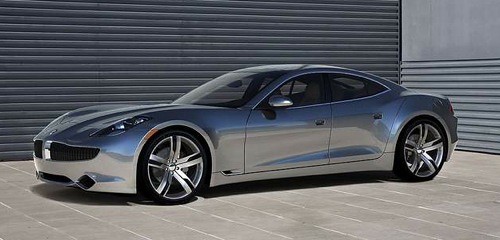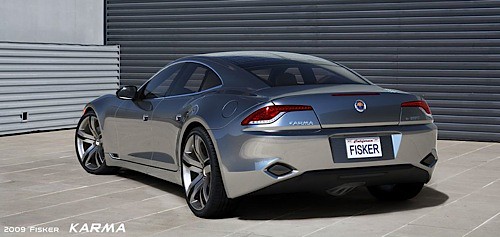Looks like Better Place has added Hawaii to it’s list of states willing to build its electric vehicle infrastructure. Today, Better Place said that it will be partnering with Hawaii to make mass adoption of electric vehicles powered by renewable energy a reality in the state by 2012. Official press release is below.
Tuesday, 02 Dec 2008
Governor Lingle and Better Place Announce Partnership to Offer National Blueprint for Clean Energy in Transportation
Hawaiian Electric and Better Place Sign Agreement to Power Electric Vehicles with Renewable Energy
HONOLULU (Dec 02, 2008) — Today, Governor Linda Lingle and Shai Agassi, Founder and CEO of Better Place unveiled a plan to bring an electric-car network to Hawai‘i, creating a model for the adoption of electric cars in the U.S. The move – only the second of its kind announced in the nation – will help fuel Hawai‘i’s drive to lead the nation in renewable energy use, create jobs locally, while also helping to secure our energy future.
“Attracting investments into the state is a major component of our Five-Point Action Plan to help stimulate the economy”, said Governor Linda Lingle. “Today’s announcement is a significant move towards our state gaining independence from foreign oil. This public-private partnership is exactly the type of investment we have been working on as we continue to carry out our Hawai’i Clean Energy Initiative (HCEI), moving toward the goal of 70 percent clean energy for the State of Hawai‘i. It highlights the importance we place on finding innovative ways to attract investments in energy technology,” Governor Lingle added.
Better Place, the world’s leading mobility operator, plans to begin permitting for the network within the next year and begin introducing vehicles within 18 months, with mass-market availability of electric cars in 2012. Hawai‘i joins Israel, Denmark, Australia and California since Better Place was founded in October 2007, committed to deploying the world’s first electric car networks.
Hawai‘i spends up to $7 billion a year on oil imports and drivers pay some of the highest gasoline prices in the nation — accounting for nearly 20 percent of the state’s Green House Gases (GHG). Building the infrastructure for widespread adoption of electric vehicles will not only stimulate the local economy and reduce carbon emissions, but also provide a more affordable transportation option to Hawaii’s drivers.
“Hawai‘i, with its ready access to renewable energy resources like solar, wind, wave and geothermal, is the ideal location to serve as a blue print for the rest of the U.S. in terms of reducing our dependence on foreign oil, growing our renewable energy portfolio and creating an infrastructure that will stabilize our economy,” said Shai Agassi, Founder and CEO of Better Place. “Hawai‘i has made the commitment to breaking its dependence on foreign oil, and is leading the way in addressing the most important economic and energy issues facing us today.”
Hawaiian Electric Companies and Better Place Hawai‘i also signed a historic Memorandum of Understanding (MOU) to collaborate on the infrastructure and energy needs to power Better Place’s unique network of public charging spots and battery swapping stations with renewable energy. The partnership capitalizes on Better Place’s innovative business model and Hawai‘i’s abundant renewable energy resources to deliver the large-scale deployment of electrical vehicles throughout the state.
“Hawaiian Electric is proud to be the first utility in the United States to sign an agreement with Better Place,” said Robbie Alm, Hawaiian Electric executive vice president. “It is clear that to reach the very progressive goals of the Hawaii Clean Energy Initiative will take changes not just in the way we make and use electricity, but in the way we move around our islands.
“The Better Place plan will provide immediate benefits to consumers and encourage the addition of more renewable energy resources to our grid, an essential element of HCEI. Because Better Place will manage when vehicles are recharged, they can provide a market for renewable energy output in off-peak hours when it might otherwise not be needed,” Alm said.
The arrival of Better Place Hawai‘i furthers the progress of the Hawai‘i Clean Energy Initiative (HCEI) signed in January – with the goal to meet the state’s energy needs from 70% clean energy by 2030, as well as fostering economic growth and building the workforce of the future. The state is well on its way to leading the nation to a new era of energy independence.
“While oil prices have recently come down from their historic highs, we believe this volatility highlights the urgency for a transformation to renewable energies,” said Ted Liu, director of the state Department of Business, Economic Development and Tourism. “As we begin to break our addiction to foreign oil, we will be a model for the rest of the nation and the world.”
About Better Place:
Better Place is a mobility operator that aims to reduce oil dependence by delivering personal transportation as a sustainable service. Launched in 2007 with $200 million of venture funding, the company builds electric-vehicle networks powered by renewable energy to give consumers an affordable, sustainable alternative for personal mobility. Better Place is working with partners to build its first standards-based networks in Israel, Denmark, Australia and California. Better Place will activate networks on a country-by-country basis with initial deployments beginning in 2010.
Media Contact(s):
Lenny Klompus
Senior Advisor – Communications
808-586-7705
Ted Peck
Administrator, State Energy Office
808-586-2355
Julie Mullins
Better Place
650-387-0486
julie.mullins@betterplace.com
Peter Rosegg
Hawaiian Electric Company
808-543-7780
Peter.Rosegg@heco.com



